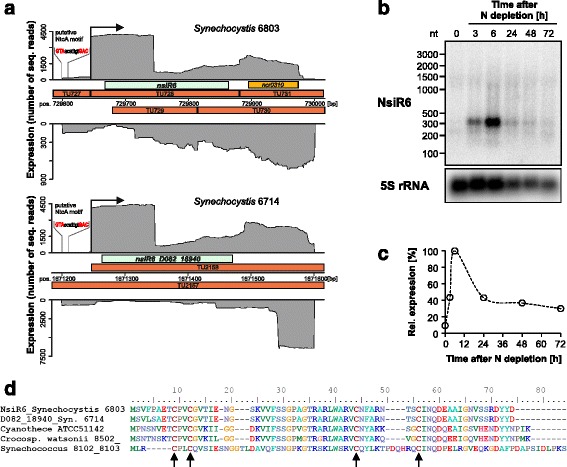Fig. 4.

The NsiR6 peptide. a Transcriptomic datasets indicated high read coverage in a region without annotation in Synechocystis 6803 [21], which contains the here defined nsiR6 gene. The homolog in Synechocystis 6714 is D082_18940 [20]. Shown is the read coverage (grey) resulting from previous transcriptome analysis, including the respective transcriptional units (TU) defined in that work [20, 21] and a putative NtcA binding site, centered 42 nt upstream the transcription initiation site in both strains. Relevant transcription initiation sites appear as steep increase in read coverage and are labelled by a black arrow. The length of the 5’-UTRs is 26 nt in both strains. Other non-coding TUs are colored orange. There is transcription in antisense orientation in both strains but with much lower coverage. b Northern blot showing the nitrogen stress-induced transcript accumulation of the NsiR6 mRNA in Synechocystis 6803 over 72 h. Time point 0 refers to the nitrogen-replete condition. c Time course of NsiR6 mRNA accumulation after normalization to 5S rRNA. The data are presented as relative to the signal at 6 h after diminishing N (=100%). d Sequence comparison of NsiR6 homologs from the two Synechocystis strains, Cyanothece ATCC 51142, Crocosphaera watsonii WH 8502 and the two marine Synechococcus strains WH 8102 and WH 8103 which harbor an identical protein. Four conserved cysteine residues are highlighted by arrows. These are conserved in all 63 homologs detected throughout the cyanobacterial phylum
